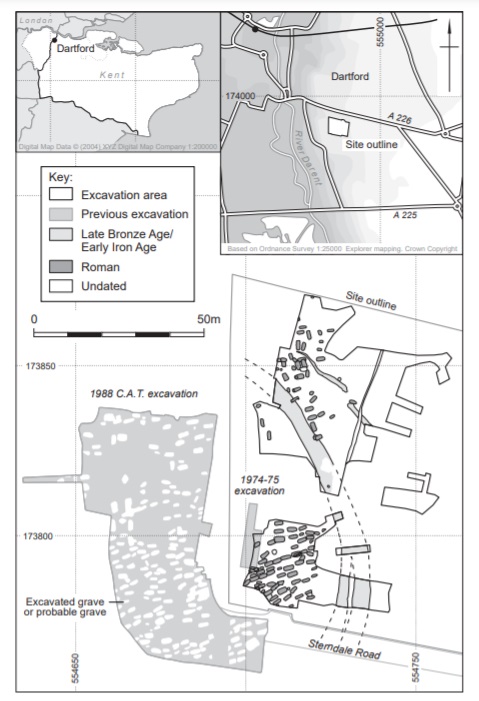What do we know about the cemetery?
The cemetery has been excavated many times since it was first discovered in 1792. More than 330 graves have been found here.
Archaeologists think that the cemetery dates from the late 2nd century AD because they haven't found many cremation burials. From the 2nd century AD onwards it was more usual for people in southern Britain to be buried after death rather than cremated. They also found pottery from the 3rd and 4th century AD in some of the graves and a coin showing Constantine I (AD 308-337) in one of the stone coffins. This means that the cemetery was probably still being used in the 3rd and 4th centuries.
Where is the cemetery?
The East Hill Dartford Cemetery sits on top of a slope overlooking the Darent Valley. Like most Roman cemeteries, it was next to a road outside the town walls. The Romans might have buried their dead outside towns to stop diseases from spreading.
The cemetery is just south of Roman Watling Street, a major Roman road, which was probably linked to the large Romano-British settlement at Dartford. It’s most likely that the people buried at East Hill lived in this community.
Evidence from the Cemetery
Click on the images below to find out more about objects and features found at East Hill Cemetery.




